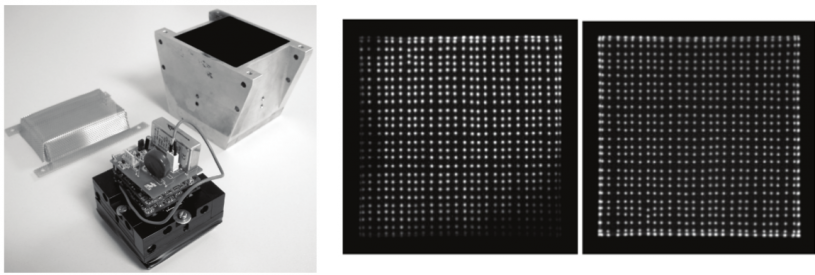rPET detectors design and data processing

| AUTHORS | |
| JOURNAL | IEEE Nuclear Science Symposium Conference Record, 2005 |
| ABSTRACT |
Small animal PET systems based on rotating planar detectors posses some interesting advantages for high sensitivity, high resolution imaging. We have designed the rPET detectors based on MLS crystals assembled on a 30×30 matrix optically coupled to a flat-panel PS-PMT. Weighted position readout circuits pre-process the 64 signals from the 8×8 anodes matrix, which are digitized using a charge-integrating converter. The amplification electronics, including the trigger output for coincidence detection, and the high voltage supply are integrated in a three PCBs stack that forms the base attached to the back of the PMT. The whole assembly is enclosed in a light tight, lead (Pb) shielded aluminum box.
The detectors are mounted on a rotating gantry with more than 180 degrees rotation span. The digitized events are screened and histogramed, and a modified center of gravity algorithm removes from the position calculation those signals with poor signal to noise ratio. Apparent mean crystal size on the 511 keV field-flood images is 0.6 mm, mean peak-to-valley ratio is better than 8, and intrinsic resolution is 1.5 mm at the central row, with the energy window wide open. Sensitivity (CPS) for a pair of these detectors set in coincidence at 160 mm distance is 1% |
| LINK | http://ieeexplore.ieee.org/document/1596934/ |



